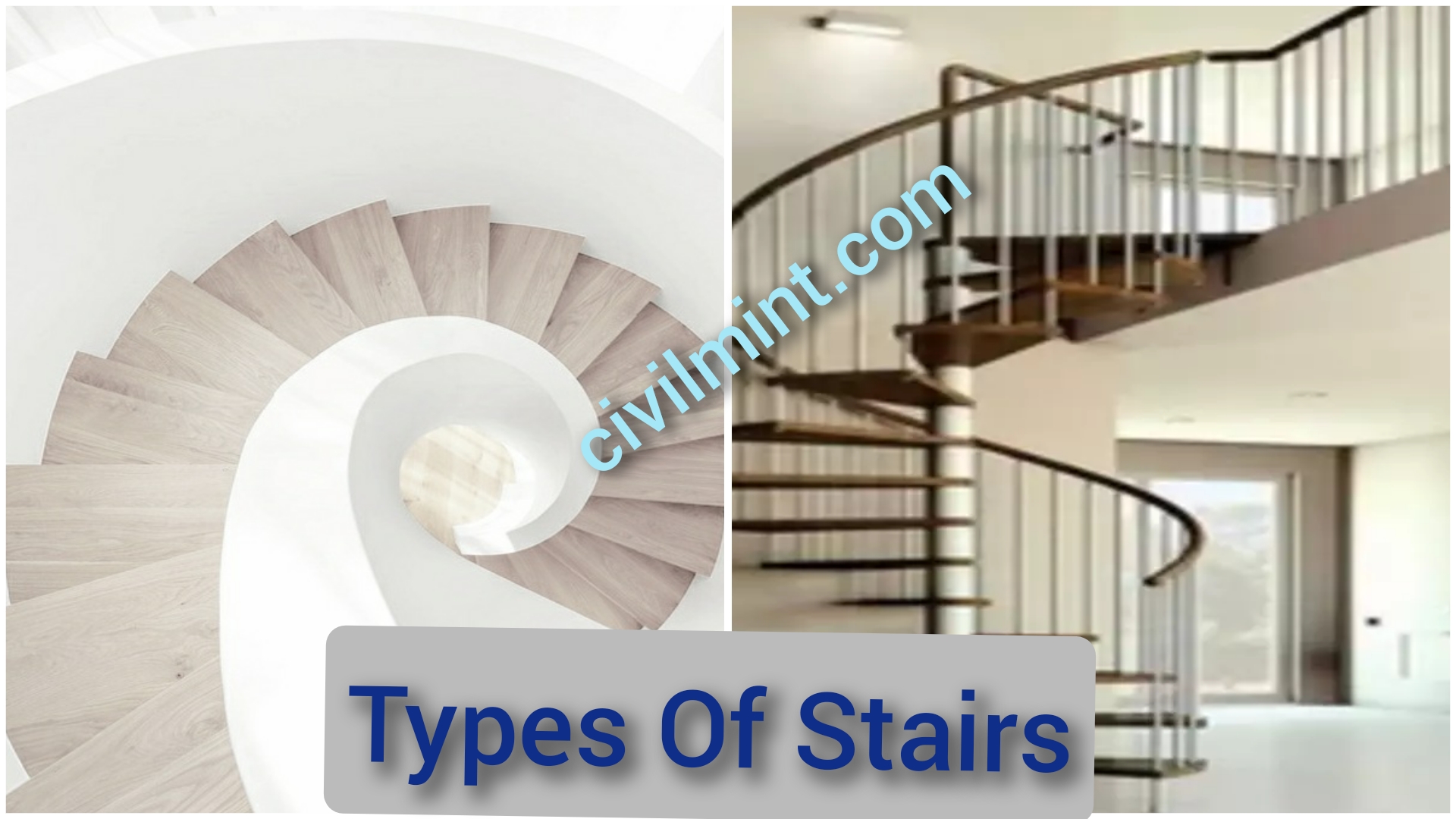Various types of stairs are used in the field of building construction. This article explains types of staircases based on shape.
Staircases can be constructed using various materials such as wood, concrete masonry, or cast iron. While wooden stairs are not as safe due to the risk of fire, they are still utilized in less significant structures that require access to small upper-floor spaces. Spiral cast iron or steel stairs are often employed to reduce the area occupied by the staircase. Masonry stairs are frequently used in residential buildings, while reinforced concrete stairs are a popular choice for various types of constructions.
Based on the shapes stairs may be classified as:
- Straight stairs.
- Dog legged stairs.
- Well or open-newel stairs.
- Geometrical stairs.
- Spiral stairs
Let us know these 5 types of stairs.
Table of Contents
1. Straight Stairs
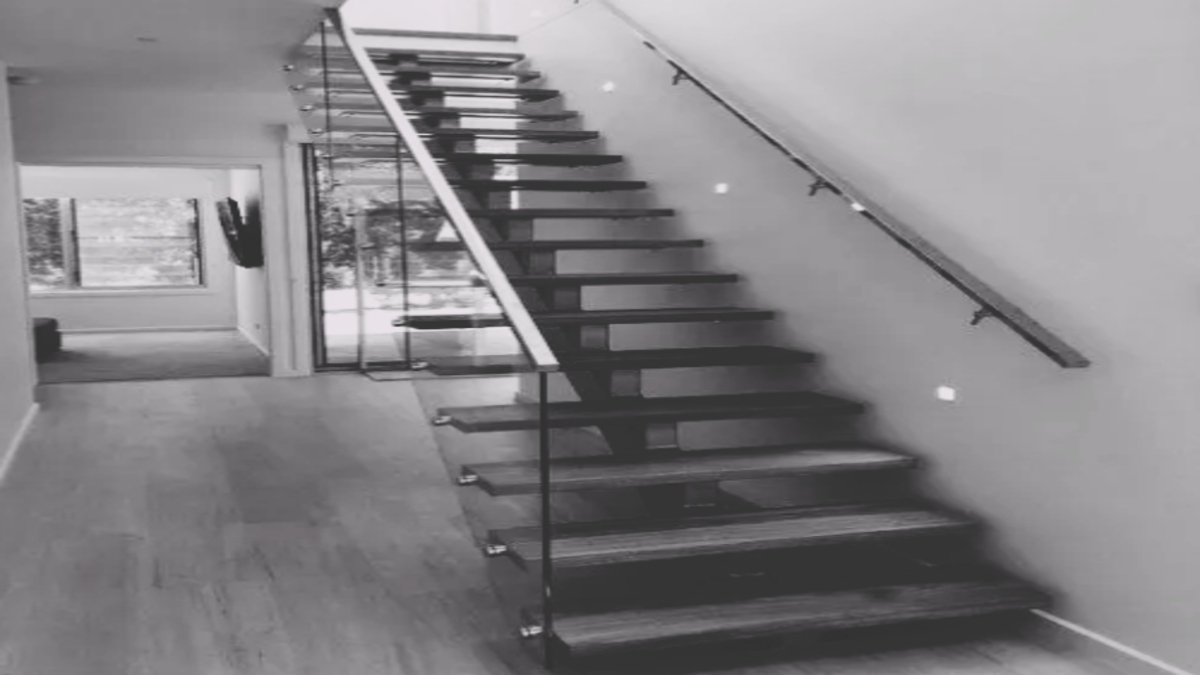
Straight stairs are the simplest type of stairs that go straight up from one level to another without any curves or turns. They are the most common type of stairs you see in houses, schools, and other buildings.
2. Dog Legged Stairs

Dog legged stairs are similar to straight stairs, but they have a turn in them. They get their name from the way they look, like a dog’s hind leg. These stairs are often used when space is limited, and a straight stair would take up too much room.
3. Well or Open-Newel Stairs
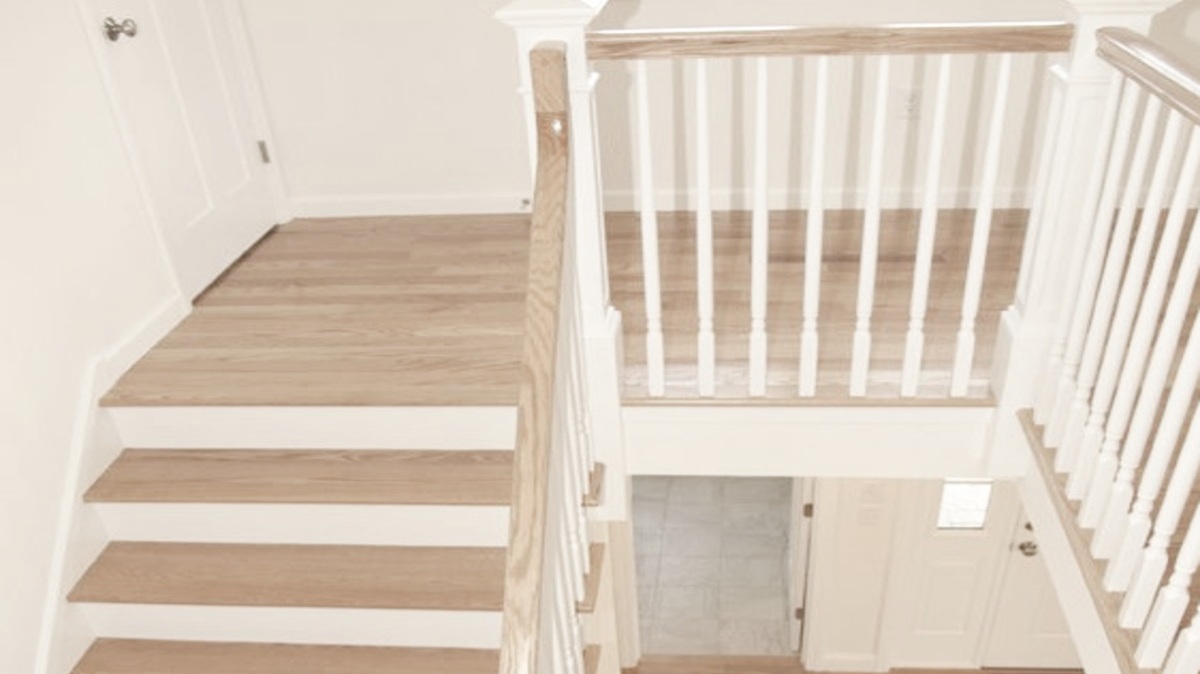
Well or open-newel stairs are named after the central space in the middle of the staircase called the “well.” These stairs have a newel post, which is a vertical post that supports the handrail, at the beginning and end of each flight of stairs. They are often used in grand entrance halls and other large buildings.
4. Geometrical Stairs
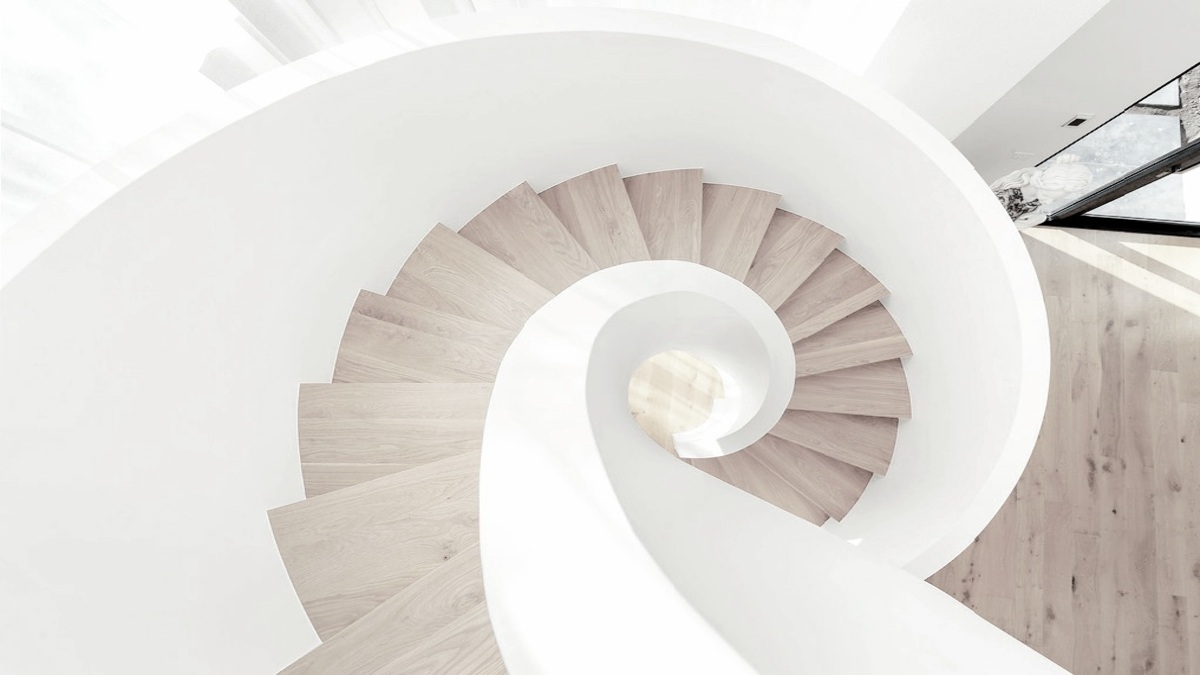
Geometrical stairs are unique and artistic. They come in different shapes, such as oval, circular, or elliptical. These stairs are often used in museums, art galleries, and other places where the design is essential.
5. Spiral Stairs
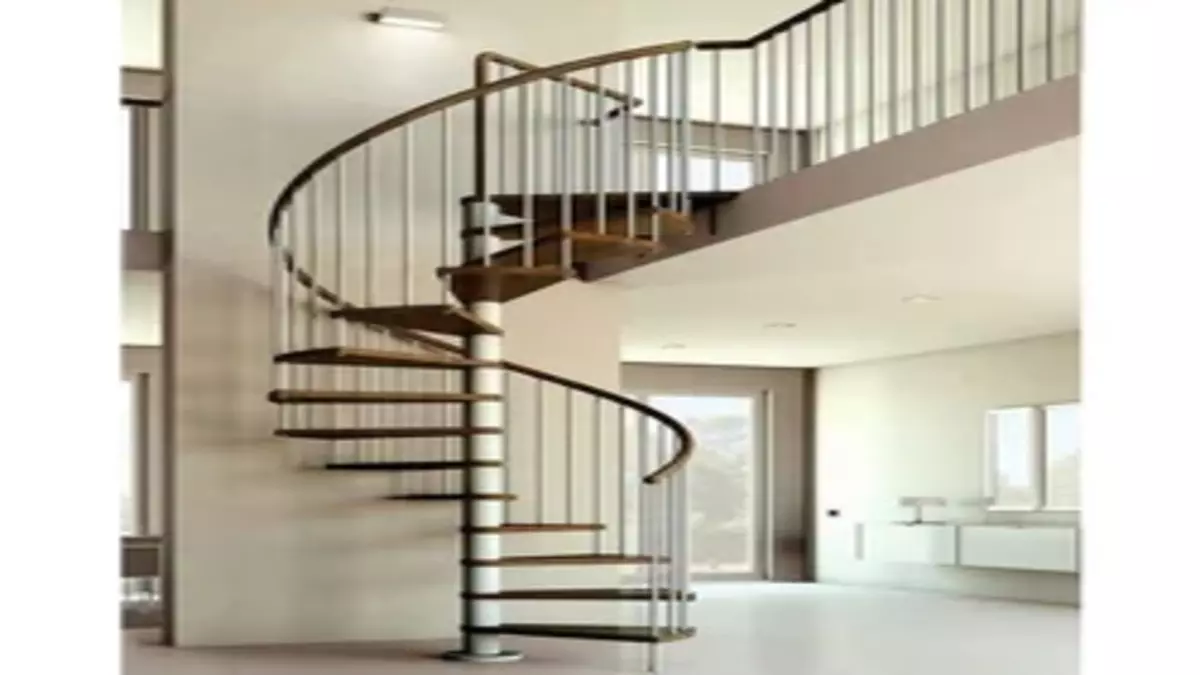
Spiral stairs are curved stairs that go up in a spiral shape around a central pole or column. They are often used in small spaces, such as attics, because they take up less room than a traditional staircase. They are also used for their unique and elegant design.

